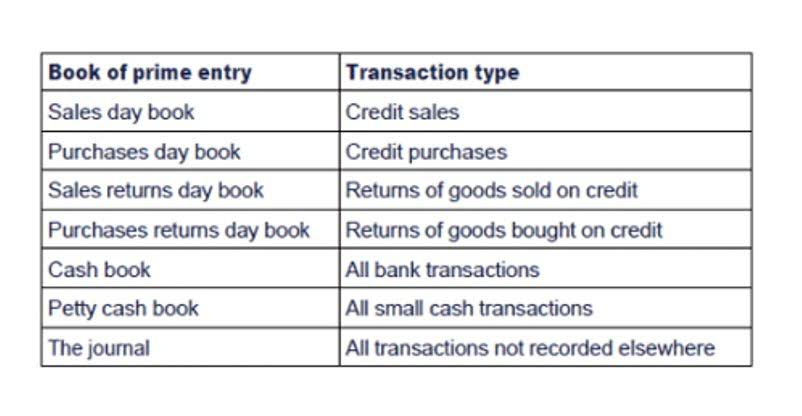
The company’s accountants record a $1 million debit entry to the audit expense account and a $1 million credit entry to the other current liabilities account. When a payment of $1 million is made, the company’s accountant what are liability accounts makes a $1 million debit entry to the other current liabilities account and a $1 million credit to the cash account. Current liability accounts can vary by industry or according to various government regulations.
What is the approximate value of your cash savings and other investments?
- They’re recorded in the short-term liabilities section of the balance sheet.
- These are the periodic payments made by a lessee (the business) to a lessor (property owner) for the right to use an asset, such as property, plant or equipment.
- They can include a future service owed to others such as short- or long-term borrowing from banks, individuals, or other entities or a previous transaction that’s created an unsettled obligation.
- Non-current liabilities can also be referred to as long-term liabilities.
- Most companies don’t pay for goods and services as they’re acquired, AP is equivalent to a stack of bills waiting to be paid.
- Current liability accounts can vary by industry or according to various government regulations.
Expenses are the costs required to conduct business operations and produce revenue for the company. The balance sheet (or statement of financial position) is one of the three basic financial statements that every business owner analyzes to make financial decisions. A balance sheet reports your firm’s assets, liabilities, and equity as of a specific date. There are also cases where there is a possibility that a business may have a liability.
The long-term debt ratio

If more goods are bought from United Traders (thereby incurring an additional liability to United Traders), an entry would be made on the credit side of United Traders Account. In spite of all the discussion surrounding these terms, we can also say that they are the fundamental operators of accounting, which underpin the subject. Similarly, the word “credit” has its historical roots in the Latin word credere, meaning “to believe.” In accounting, this is often abbreviated as “Cr.”
Contingent liabilities
When using accrual accounting, you’ll likely run into times when you need to record accrued expenses. Accrued expenses are expenses that you’ve already incurred and need to account for in the current month, though they won’t be paid until the following month. Both income taxes and sales taxes need to be properly accounted for.
- Hence, when receiving funds from any business activity, we make an entry on the credit side of the relevant income or revenue account.
- A company’s net worth, also known as shareholders’ equity or owner’s equity, is calculated by subtracting its total liabilities from its total assets.
- They’re any debts or obligations that your business has incurred that are due in over a year.
- Companies segregate their liabilities by their time horizon for when they’re due.
- It might be as simple as your electric bill, rent for your office or other types of business purchases.
- Most state laws also allow creditors the ability to force debtors to sell assets in order to raise enough cash to pay off their debts.
Examples of Liability Accounts
Assets and liabilities are key factors to making smarter decisions with your corporate finances and are often showcased in the balance sheet and other financial statements. Accounting software can easily compile these statements and track the metrics they produce. Current liabilities are important because they can be used to determine how well a company is performing by whether or not they can afford to pay their current liabilities with the revenue generated. A company that can’t afford to pay may not be operating at the optimum level. Below we’ll cover their basic definitions and functions, how they factor into the balance sheet and provide some formulas and examples to help you put them into practice.
Noncurrent liabilities

If he introduces any additional capital, an entry will be made on the credit side of his capital account. For example, the amount of capital of Mr. John on the first day of the accounting period will be shown on the credit side of John’s Capital Account. If an amount is paid to United Traders (thereby reducing the liability to United Traders), an entry is made on the debit side of United Traders Account. Today, accountants adopt practices like the use of these columns to keep records that are used on a long-term basis. They are also useful for the management in promoting effective decision-making.
Although average debt ratios vary widely by industry, if you have a debt ratio of 40% or lower, you’re probably in the clear. If you have a debt ratio of 60% or higher, investors and lenders might see that as a sign that your business has too much debt. Generally speaking, the lower the debt ratio for your business, the less leveraged it is and the more capable it is of paying off its debts. The higher it is, the more leveraged it is, and the more liability risk it has. But there are other calculations that involve liabilities that you might perform—to analyze them and make sure your cash isn’t constantly tied up in paying off your debts. No one likes debt, but it’s an unavoidable part of running a small business.
- There are three primary classifications when it comes to liabilities for your business.
- Read on to learn more about the importance of liabilities, the different types, and their placement on your balance sheet.
- Just as you wouldn’t want to take on a mortgage that you couldn’t easily afford, it’s important to be strategic and selective about the debt you assume as a business owner.
- As a result, many financial ratios use current liabilities in their calculations to determine how well or how long a company is paying them down.
- Liability may also refer to the legal liability of a business or individual.
- Using the balance sheet data can help you make better decisions and increase profits.

